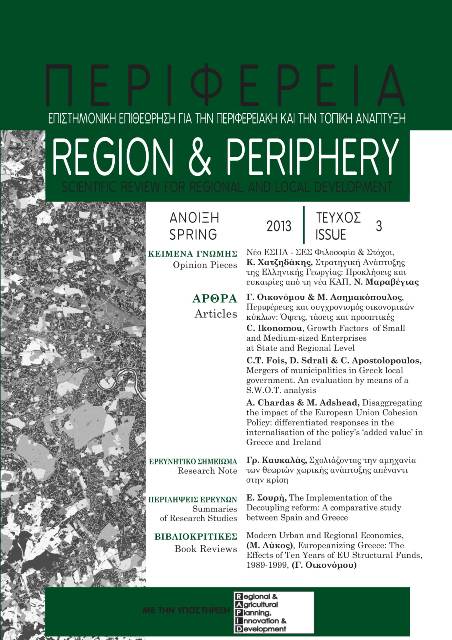Mergers of municipalities in Greek local government. An evaluation by means of a S.W.O.T. analysis

Abstract
The aim of this paper is to evaluate the reforms in local government that took place in Greece during the last fi fteen years. The aim of the reforms was the creation of strong local government entities, i.e. powerful and effi cient local authorities, able to plan and implement local development policies, and to provide effective and qualitatively superior services to citizens. SWOT analysis is used in order to identify the advantages and disadvantages, opportunities and threats of the “Kallikrates” Program. Results indicate that the new reform offers to local government new powers and resources and therefore leads to improved effectiveness; reduced operating costs and promotion of the active participa tion of citizens in public affairs, by means of local referendums. However, there are also threats created for the reform, which are related to the broader fi nancial crisis, the disputes of political powers on the substance of the reform, the boundaries of new municipalities and the needs in personnel.
Article Details
- How to Cite
-
Fois, C. T., Sdrali, D., & Apostolopoulos, C. D. (2013). Mergers of municipalities in Greek local government. An evaluation by means of a S.W.O.T. analysis. Perifereia | Regional Integration: Politics, Economics, Governance, 3(3), 83–97. https://doi.org/10.12681/rp.18900
- Section
- Research Articles

This work is licensed under a Creative Commons Attribution-NonCommercial 4.0 International License.
Authors who publish with this journal agree to the following terms:
· Authors retain copyright and grant the journal right of first publication with the work simultaneously licensed under a Creative Commons Attribution Non-Commercial License that allows others to share the work with an acknowledgement of the work's authorship and initial publication in this journal.
· Authors are able to enter into separate, additional contractual arrangements for the non-exclusive distribution of the journal's published version of the work (e.g. post it to an institutional repository or publish it in a book), with an acknowledgement of its initial publication in this journal.
· Authors are permitted and encouraged to post their work online (preferably in institutional repositories or on their website) prior to and during the submission process, as it can lead to productive exchanges, as well as earlier and greater citation of published work.


